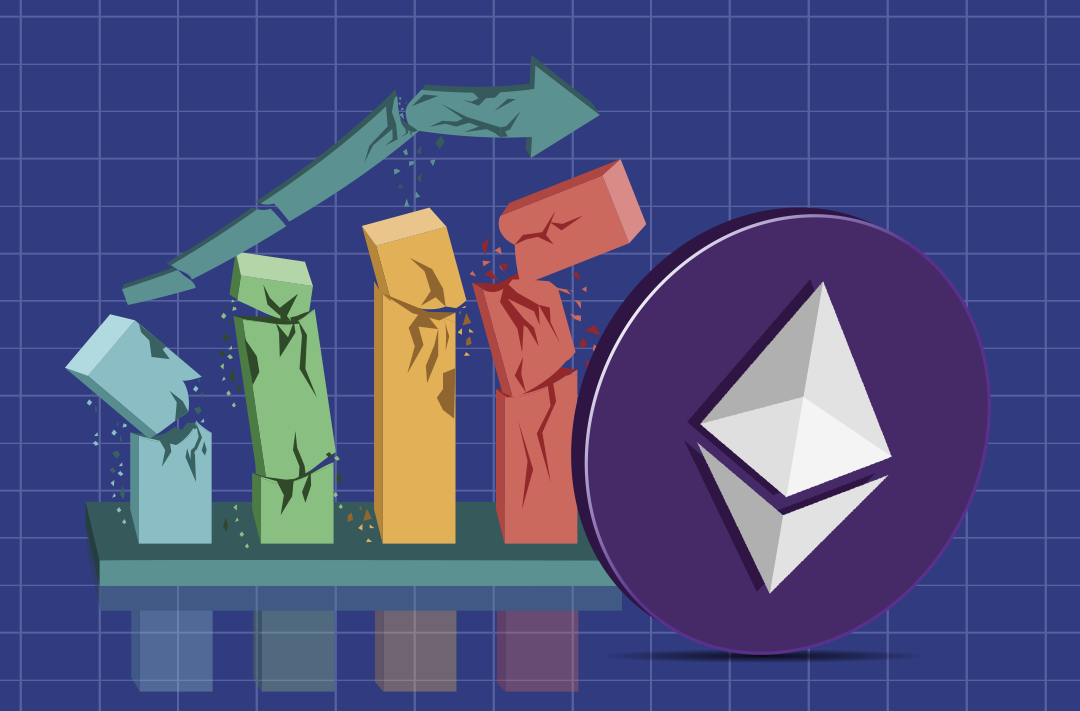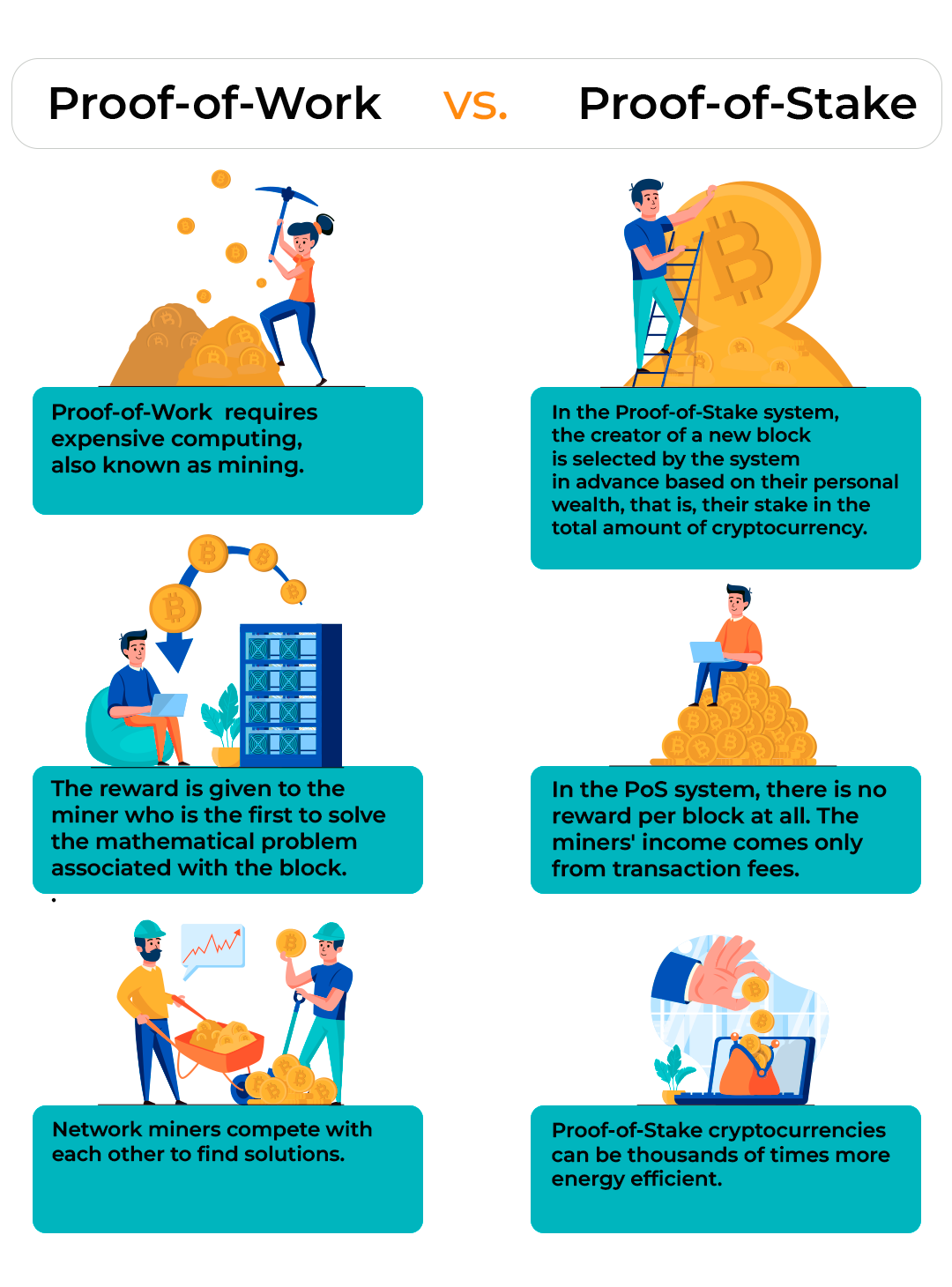Ethereum will switch to staking soon. What miners should do and how to earn in the new conditions
How the algorithm change will affect miners and what ways of earning they can use after the main altcoin's network upgrade

02.05.2022
3288
6 min
1
Ethereum developer Tim Beiko tweeted that the altcoin will completely switch from Proof-of-Work (PoW) to Proof-of-Stake (PoS) in Q3-Q4 2022. This means that mining ETH will no longer be possible, and staking will be the only way to earn coins.
The fact that Ethereum was planning to switch to the Proof-of-Stake algorithm was known back in 2016. Since then, developers have been regularly releasing new upgrades to make a smooth transition to the new algorithm. In mid-March, Ethereum launched its final Kiln test network, and a month later, developers introduced a shadow fork to test PoS.
Differences between PoW and PoS
Proof-of-Work is a consensus algorithm that is used to ensure the security of the blockchain. In PoW, the miner uses processing power to find the right value. Once the miner finds the correct value, they send the signed block to the other members of the network for validation. If the block matches the parameters set in the system, it is written into the blockchain.
The more powerful the miner's hardware is, the more chances they have to find the right value faster than the others and get the reward for the mined block. In this case, the reward is fixed. For example, the miner receives a reward of 2 ETH ($5 600 at the exchange rate on May 2) for a mined Ethereum block.
In systems based on the Proof-of-Stake algorithm, the creator of a new block is chosen based on the amount of native blockchain cryptocurrency that the user has blocked in a special smart contract.
In PoS, there are no complex calculations or power races. The user earns on this algorithm by depositing coins into staking and checking transaction blocks.
The more coins the user has, the higher the chance of being rewarded. In PoS, validators earn only on the fees that were paid by cryptocurrency users when making transactions.
One of the main things that make PoS different from PoW is that there is no need to buy expensive hardware. Any computer can participate in transaction validation

After Ethereum switches to PoS, miners will have several options available.
Option 1: mining other coins
Reconfiguring the hardware to mine other cryptocurrencies is a good option, as long as Proof-of-Work (PoW) coins are in demand, said Dmitry Kudinov, Chief Technology Officer at EMCD, the largest mining pool in Eastern Europe. According to him, the only problem PoW miners may face is criticism from ecoactivists. But so far, this problem has little effect on the situation: the cryptocurrency is actively being bought by large investors, such as Tesla, the expert added.
Which coins to mine instead of Ethereum
Instead of ETH, you can mine other coins with the hashing type Ethash. For example, you can mine Ravecoin, Ethereum Classic, Aeternity, Callisto, and Ergo.
The choice of the coin depends on the electricity costs and the profitability of mining. You can use the 2cryptocalc or whattomine calculators to figure out the yield. The services will calculate the profitability of the hardware based on its hashrate and power consumption.
Disadvantages of mining other coins
EMCD believes that due to the miners moving from the Ethereum network to others, the complexity of mining coins will increase. Therefore, the profitability of mining will decrease greatly.
The fact is that the Ethereum network has a hashrate of more than 1000 TH/s. As for other coins, it is several times lower. For example, Ravecoin has 3 TH/s, and Ethereum Classic has 25,2 TH/s. Therefore, the influx of powerful hardware into weaker networks will increase the difficulty of mining. Older graphics cards will bring less profit or stop earning altogether.
If all miners switch to other coins, the difficulty of mining them will increase hundreds or thousands of times, Fedor Golubev, founder of DeFiEarns, believes. According to him, the price of the coins themselves is unlikely to increase much, because there will be no incentives to do so.
Dmitry Noskov, the StormGain cryptocurrency exchange expert, believes the same:
“Miners who are now mining less profitable coins on the weak hardware will be hit hard. With the outflow of capacity to other altcoins, the difficulty of mining will increase and outdated hardware will cease to be profitable.”
Option 2. Selling the hardware and staking Ethereum
Staking works like a deposit in a bank: an investor buys cryptocurrency and actually receives a profit in interest for storing it in a special smart contract that makes the blockchain work. Many experts advocate switching to staking because it has several advantages over mining:
- No need to buy expensive hardware. For example, EMCD CEO Mikhael Jerlis believes that you need to buy $8 000 to $11 000 worth of hardware to get into mining. You can buy hardware with a payback period of 11-13 months for that money. You do not need to buy any hardware to stake coins. The entry threshold is low, for example, on some exchanges you can earn coins in pools, by investing from 1$.
- Fewer risks. Nothing breaks or blows in staking. And most importantly, staked coins do not need to be guarded. It is enough to store them on several exchanges and not to scatter passwords with private keys, Sergei Sergienko, an expert of TimeX crypto exchange, explained.
How to stake Ethereum
Ethereum can be staked on your own or in teams, that is, pools. To make passive income on your own, you need to become a validator and block 32 ETH coins in your wallet. The Ethereum website has detailed instructions on how to become a network validator.
If that option is not available, you need to block funds in a smart contract with other people using pools. In them, staking rewards are distributed among members in proportion to their shares. The storage is decentralized, transparent, and can be checked in any blockchain explorer, such as GetBlock.
Staking pitfalls
At first, due to the influx of users and running-in of the algorithm, the profitability of staking will be much lower than that of mining, Dmitry Kudinov, Chief Technology Officer at EMCD, said. He added that even the developers of Ethereum themselves can not say what the yield of staking will be, but there were estimates of about 4% per annum.
Also, when staking, the deposited cryptocurrency is blocked for a certain time period, which is specified in the smart contract. Therefore, it is impossible to get the cryptocurrency before the end of the contract period, Kudinov added.
How much time is left
In early 2022, the co-founder of Ethereum Vitalik Buterin said that by the end of the year the developers will implement the switch of the blockchain to the Proof-of-Stake algorithm. According to Buterin, the full implementation of the Ethereum roadmap will take about six years. As of early 2022, Buterin estimated the overall readiness of the blockchain at 50%.
Useful material?
Basics
Why Satoshi Nakamoto’s technical manifesto for a decentralized money system matters
Oct 31, 2022
Basics
Experts evaluated the development prospects of the new ecosystem and the investment attractiveness of its token
Oct 20, 2022
Basics
How to track fluctuations correctly and create an effective income strategy
Sep 13, 2022
Basics
Review of the most profitable offers from proven trading platforms
Aug 29, 2022
Basics
The Ethereum Foundation team has published a breakdown of major misconceptions about the upcoming network upgrade
Aug 18, 2022
Basics
What benefits the exchange offers, and what else is in the near future
Aug 4, 2022









 Telegram
Telegram  Twitter
Twitter